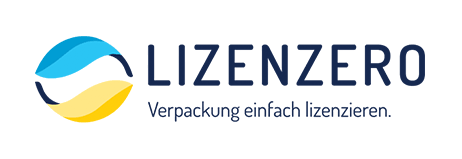International shipping is an important economic growth factor, especially for the e-commerce sector. The EU has also recognized this and has therefore adjusted its tax regulations accordingly since July 2021. In addition to fulfilling the requirements of the German Packaging Act (VerpackG) or the German Packaging Ordinance (DSGVO), for example, retailers are now subject to additional obligations as soon as they ship products to end consumers in other EU countries.
With the Packaging Act (VerpackG), the German federal government passed a new law on January 1st, 2019 that regulates the disposal and recycling of packaging waste. For retailers in Great Britain who do business with German customers and send goods to Germany, some obligations have to be fulfilled. What do companies have to consider under the German Packaging Act in the UK? We have put together the most important information for you.
Retailers on the Amazon marketplace can choose to ship the goods they sell to customers on their own – or use FBA. FBA stands for Fulfilment by Amazon (or officially: Fulfilled by Amazon). This means that the marketplace retailer makes its products available to the major retailer Amazon. In the event of a sale, the mail-order giant ships the items – usually with the benefits of Amazon Prime service that are popular with customers. Of course, the additional service creates some Amazon FBA Costs for the marketplace participant. How expensive is shipping through Amazon? We summarized all the important information for you.
All kinds of goods are sold on the Internet by numerous small, large and international online stores. Customers can purchase all products imaginable and have them convenient-ly shipped to their homes. Among the most popular goods are items of clothing, often including sustainable clothing.
Just as big companies, small stores and solo self-employed people have to take a few things into account to ensure that the shipping of goods is also resource-friendly – there is a need for action, particularly with regard to the German Packaging Act (VerpackG) for small businesses. We have compiled the most important information for you.
Just as big companies, small stores and solo self-employed people have to take a few things into account to ensure that the shipping of goods is also resource-friendly – there is a need for action, particularly with regard to the German Packaging Act (VerpackG) for small businesses. We have compiled the most important information for you.
Since 2019, the German Packaging Act (VerpackG) obliges all initial distributors of sales packaging (product, service and shipping packaging) to comply with three obligations. These must take place at two different points: at a dual system of choice and in the LUCID reporting register, provided by the Central Agency Packaging Register (ZSVR).
Especially at Christmas time it becomes clear why packaging waste in Germany is increasing yearly. This year the trend is additionally strengthened by the current COVID restrictions: Consumers buy more and more products up to their front door. But this is not only a problem in Germany: The increasing waste is also becoming visible in other EU countries – and at the expense of the environment.
Since the beginning of 2019, the German Packaging Act (VerpackG) has made companies that bring so-called sales packaging into circulation more accountable for the waste generated in this way. However, the implementation of these obligations continues to cause confusion for many companies. One of the reasons for it are the numerous, formal-legal terms, which are in the law text, which one cannot avoid for the correct default fulfilment however. One of these terms is the already mentioned term "sales packaging": What exactly is hidden behind it? Which packagings belong to it? And which not?
In addition to the new obligations introduced by the German Packaging Act (VerpackG), the law also introduced many new terms, which often do not explain themselves at first glance. One of these terms is the so-called "sales packaging": Initial distributors are obligated to license the sales packaging they put into circulation for a fee through system participation and thus to co-finance the disposal and recycling process of the packaging waste arising from this.
Within the framework of the German Packaging Act (VerpackG), no company concerned can avoid dealing with the term and definition of so-called sales packaging. After all, it is the packaging that is the subject of the obligation to participate in the system as defined in the law, according to which the initial commercial distributors of the sales packaging in question are obliged to license it annually and thus ensure its recycling.
The trade with goods bought on the Internet is constantly increasing. The number of shipped goods in e-commerce is growing every year in the double-digit range. This ongoing boom is casually generating a huge additional mountain of packaging waste. Politicians reacted by introducing a new, stricter German Packaging Act (VerpackG). What do online retailers have to do? We present an overview of the most important facts including instructions.
Within the framework of the still relatively new Packaging Act, which came into force in January 2019, a whole series of new obligations have been introduced with which companies are currently confronted. Companies that hand out products to private end users and use packaging for the first time must comply with a number of regulations. These include, among other measures, the so-called System Participation Obligation. What does this mean? What do companies have to take into account in order to act in accordance with the law and fulfill the requirements? We have put together the most important information on how to participate in a dual system.
The significant increase in recycling rates, to which the German Packaging Act (VerpackG) requires dual systems to adhere, is accompanied by a major investment mandate for the systems. For example, the planned quotas for plastics from 36 percent to 58.5 percent and in a second step to 63 percent from 2022 can only be achieved if the sorting systems are technically upgraded. This applies both to the quantitative sorting capacity and the qualitative sorting potential. A similar picture is emerging for paper-based packaging: Here, the quota initially rose from 70 to 85 percent, and from 2022, 90 percent is the benchmark to be met.














